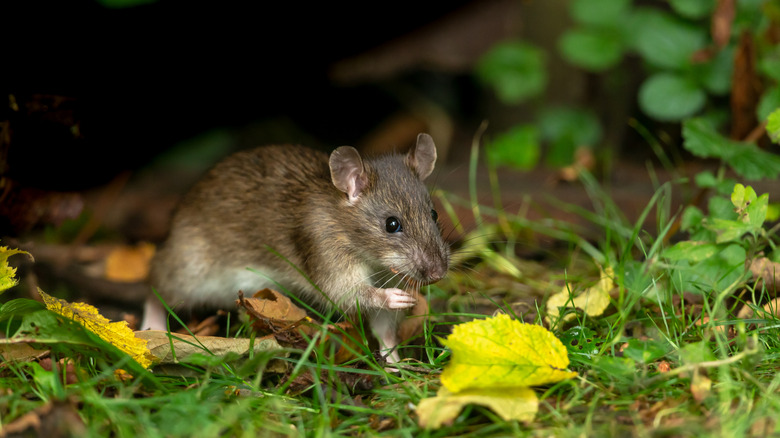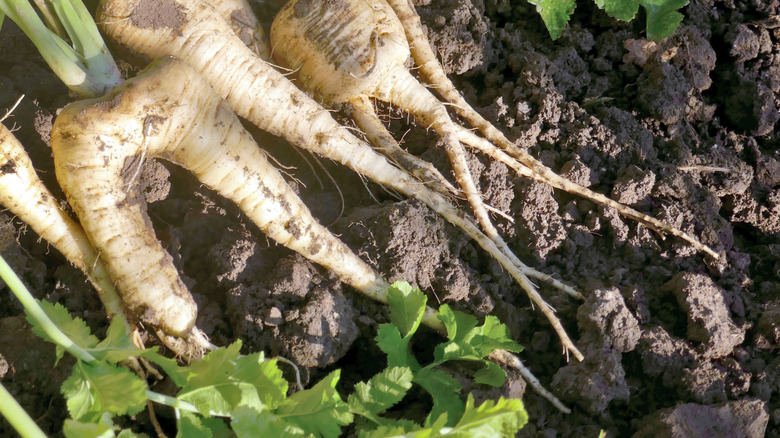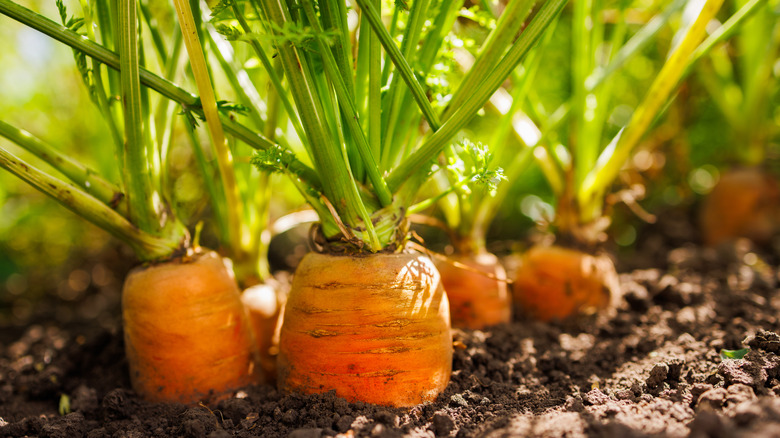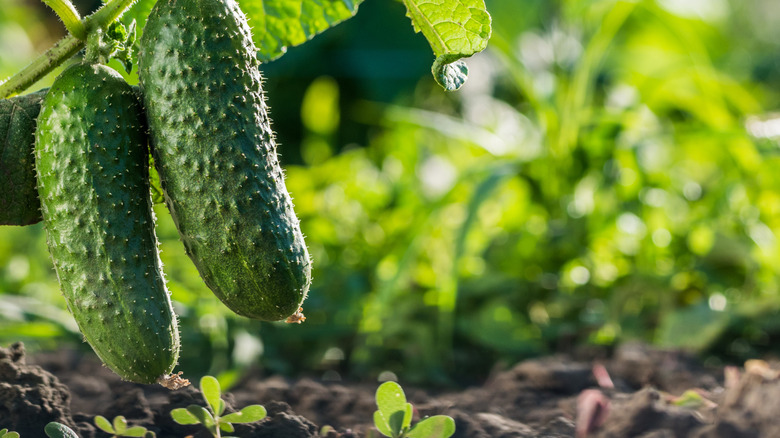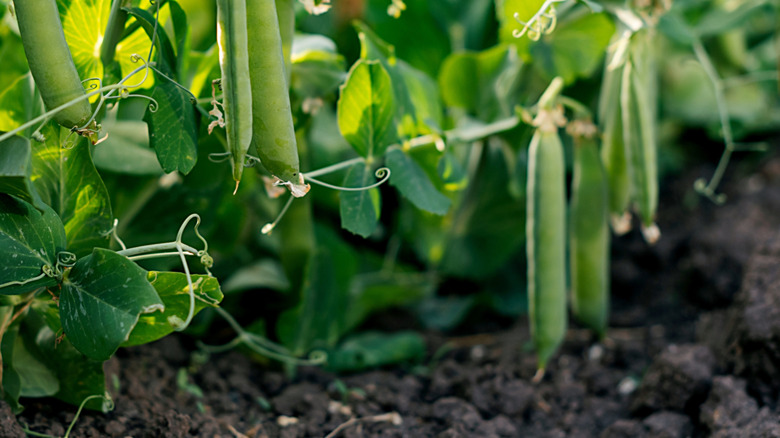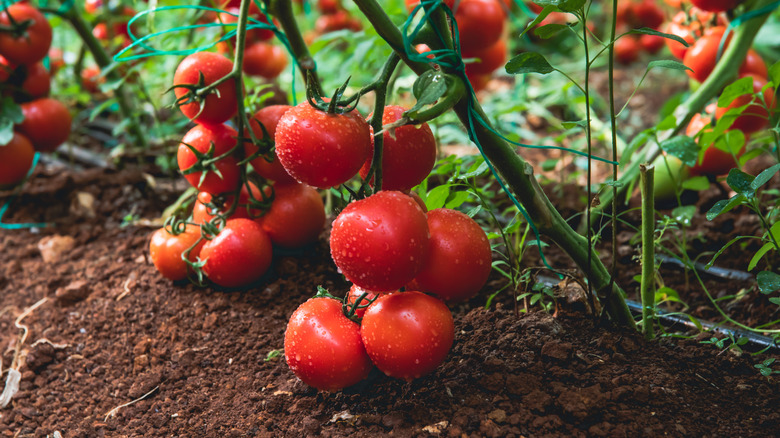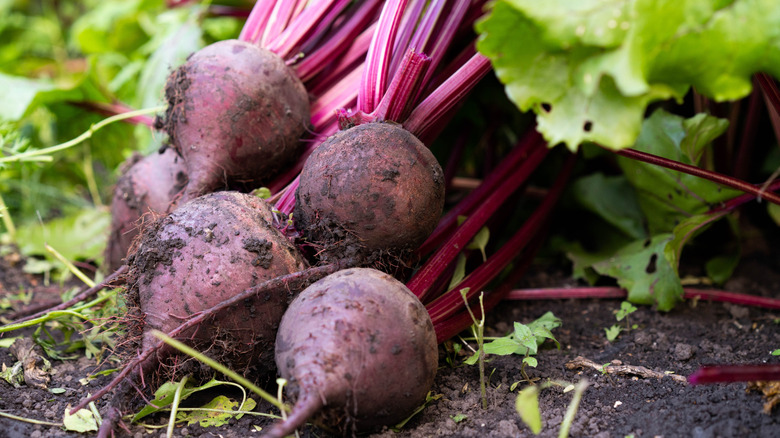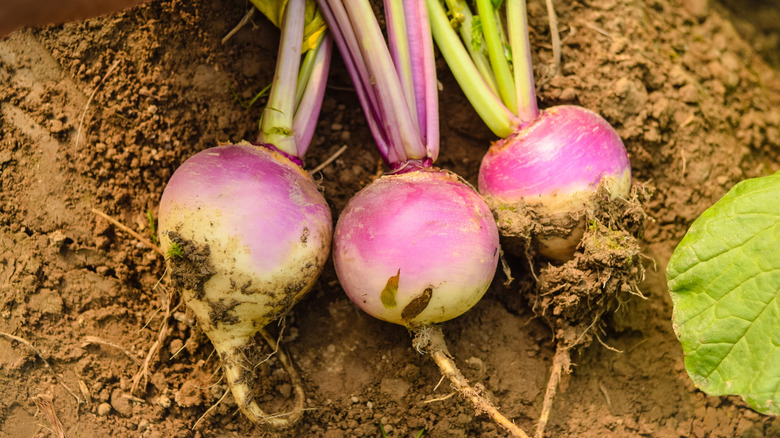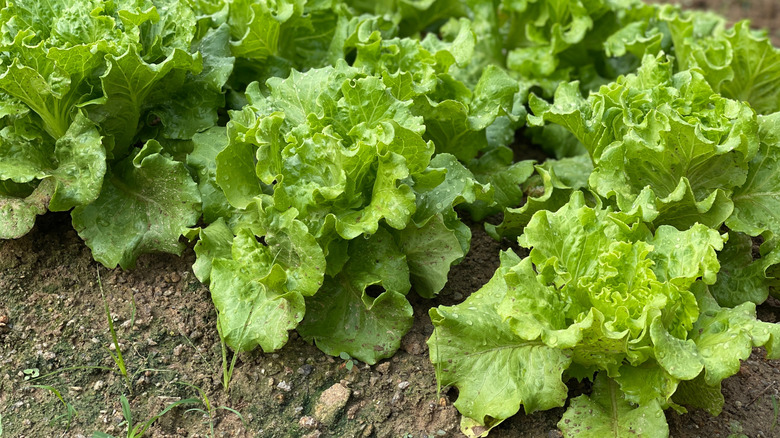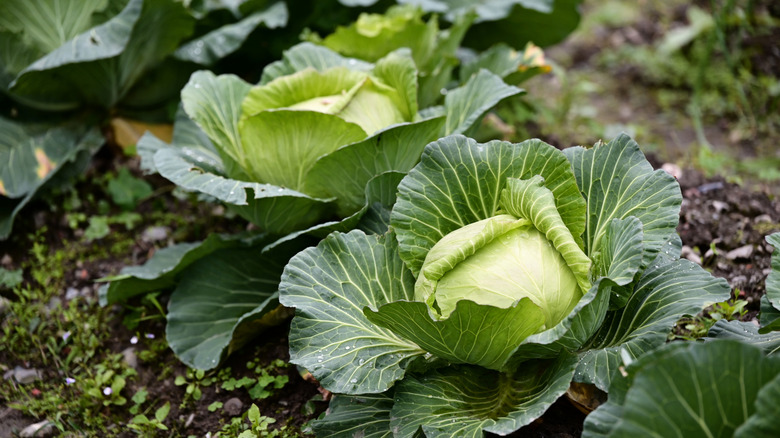10 Vegetables In Your Fall Garden That Are Drawing Rats Into Your Yard
Can't seem to get rid of those pesky rodents, no matter how many traps you set? Well, your fall vegetable garden might be the reason. If rats are the issue, you can't just let them be. Rats can wreak havoc on your vegetables, and they also carry diseases. Why are rats drawn to your yard in the first place? Well, it's because you are feeding them. Cucumbers, tomatoes, carrots, radishes, potatoes, and parsnips — all those classic fall garden veggies — can draw unwanted guests, like rats, that are looking for an easy meal. In the fall, rats and other rodents are busy storing energy and fat to survive the cold months ahead, and these veggies are among their favorites.
This makes your fall garden an irresistible target. Besides containing vegetables, the condition of your fall garden might also be attracting rats. Keep the garden clean by gathering fallen leaves, lifting spoiled fruit, and opening tangled growth. Quickly harvest what's ripe. This will eliminate opportunities for shelter or temptation for hungry visitors. If you want to grow any of the autumn vegetables on this list and avoid a rodent intrusion, try adding plants that keep rats out of the garden, like wintergreen, and back that up with sturdy wire mesh or fencing around the bed.
Parsnips
A relative of the carrot, parsnip (Pastinaca sativa) is a root vegetable often harvested in fall and winter, from October through December (USDA Zones 2-9). If you have parsnips growing in your yard, they are going to attract rats. Reason? They are sweet, high-carb and underground. That is good news for rats but bad news for you because once the rats find a stable food source, they will keep coming back. To keep them out, make sure there are no holes in your garden's fencing or that the mesh is not loose around your plants.
Radishes
Radishes (Raphanus sativus; USDA Zones 2-11) are cool-weather crops, and they come in two main types: those that grow best in spring and those suited for fall. So, if you are growing fall radishes, keep an eye out for rats. Radishes have a strong, spicy flavor, and it's one that rodents seem to really enjoy. Rats can go after your radishes while they're still growing or after they've been harvested. Consider using stone landscaping materials as a barrier to keep rodents out of your garden (and your home, for that matter).
Carrots
Carrots (Daucus carota subsp. sativus) grow in zones 2-11 and get their sweetest flavor when it's between 40 and 80 degrees Fahrenheit, so fall is really the ideal time to plant them, especially if you are looking for a winter harvest. And, like many other root vegetables, they are also attacked by rats. Rats will often dig under the soil and chew on the roots, ruining your carrots from below before you even notice. Consider planting onions nearby — their sulfuric odor is the secret to controlling pests like rats and bugs both indoors and in gardens.
Cucumbers
Many gardeners plant cucumbers (Cucumis sativus; USDA Zones 2-11) for a second time during the late summer to take advantage of the fall planting season. Unfortunately, gardeners aren't the only ones taking advantage. If your cucumbers are hanging close to the ground in an unenclosed area, rodents can chew into them. What's worse, hungry rats may cause damage to the seeds before they even germinate.
Peas
For a fall crop, you can plant peas (Pisum sativum; USDA Zones 2-11) around September, and they'll be ready to harvest around early to mid-October. Just make sure you properly prep the soil and follow other tips for sowing late-season fall vegetables. Cleaning your yard regularly during the fall is also crucial to a successful pea harvest. A neglected heap of leaves or other organic debris close to your peas is an open invitation for rats, and they'll happily chew through the pods and leaves while your plants are still growing.
Tomatoes
Even though tomatoes (Solanum lycopersicum L.) are mostly grown in spring and thrive in summer, late-August to early September is another time to plant them for a fall harvest. If you had a problem with rats in the summer, they will more than likely come for your fall tomatoes as well. When there are half-eaten tomatoes in your garden still hanging on the vine, the culprit's clear — it's rats at work. Caging tomatoes can prevent rats from gnawing on them with abandon.
Beets
Beets (Beta vulgaris; Zone 2 to 11) are cool-weather vegetables that grow best when temperatures stay mild in spring and fall. Rats love munching on beets because they are sweet and grow in the ground — easy access for these rodents. To keep them from discovering your beets in the first place, lock down your compost and move it into sturdy, rodent-proof bins with tight-fitting lids that leave no chance for sneaky intruders. Grow beets in an enclosed area, and if you are a pet person, the proximity of a dog and a cat might help scare rats away.
Turnips
Turnips (Brassica rapa; USDA Zones 2-11) are such an underrated fall vegetable. They're super easy to grow, and surprisingly versatile. You can enjoy them raw, cooked, or even pickled. However, like other root vegetables, rats enjoy eating turnips. If you notice that your turnips have clean, round bite marks, that's a sure sign that rats are exploring your fall garden. It's best to take action right away before they wipe out the rest of your crop. Applying potent-smelling peppermint oil near or on turnip plants is one protective measure you may want to try.
Lettuce
Lettuce (Lactuca sativa; Zone 2 to 11) likes cool weather, ideally between 60 and 65 degrees Fahrenheit, which is why it's mostly grown in spring and fall. Yet rats and mice can easily ruin this crop. Gardeners often wake to find their lettuce chewed down to the stalks — and the perpetrators caught in the act, rats darting between the rows of plants. Now, a rat or two lurking amongst your lettuce leaves can be handled with bait traps — but a community of them means it's time to call the pros.
Cabbage
Cabbage (Brassica oleracea L.; Zone 2 to 11) thrives when sown in early spring. However, it can also be grown when planted in late summer, promising a crisp fall harvest. If you are planting cabbage in the fall, rats might come around your yard as well. It is not their first choice, but if there are no grains around or sweeter, more caloric veggies in the garden, they will eat cabbage happily, with cabbage heads being their favorite. Surrounding your garden with wire mesh buried at least 6 inches into the ground can fence rats out.
